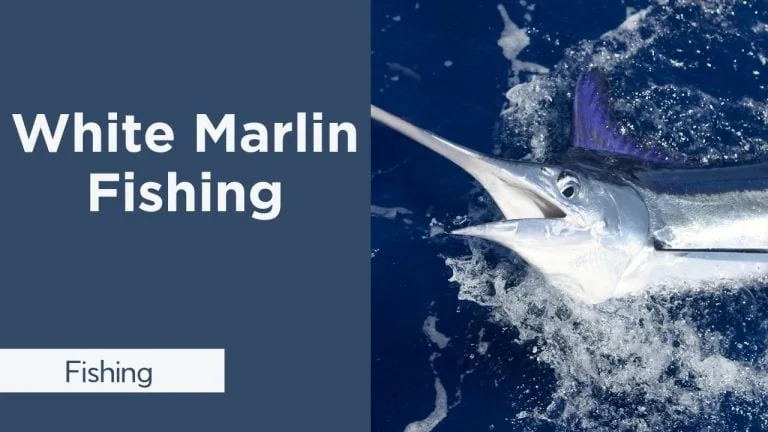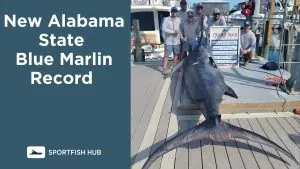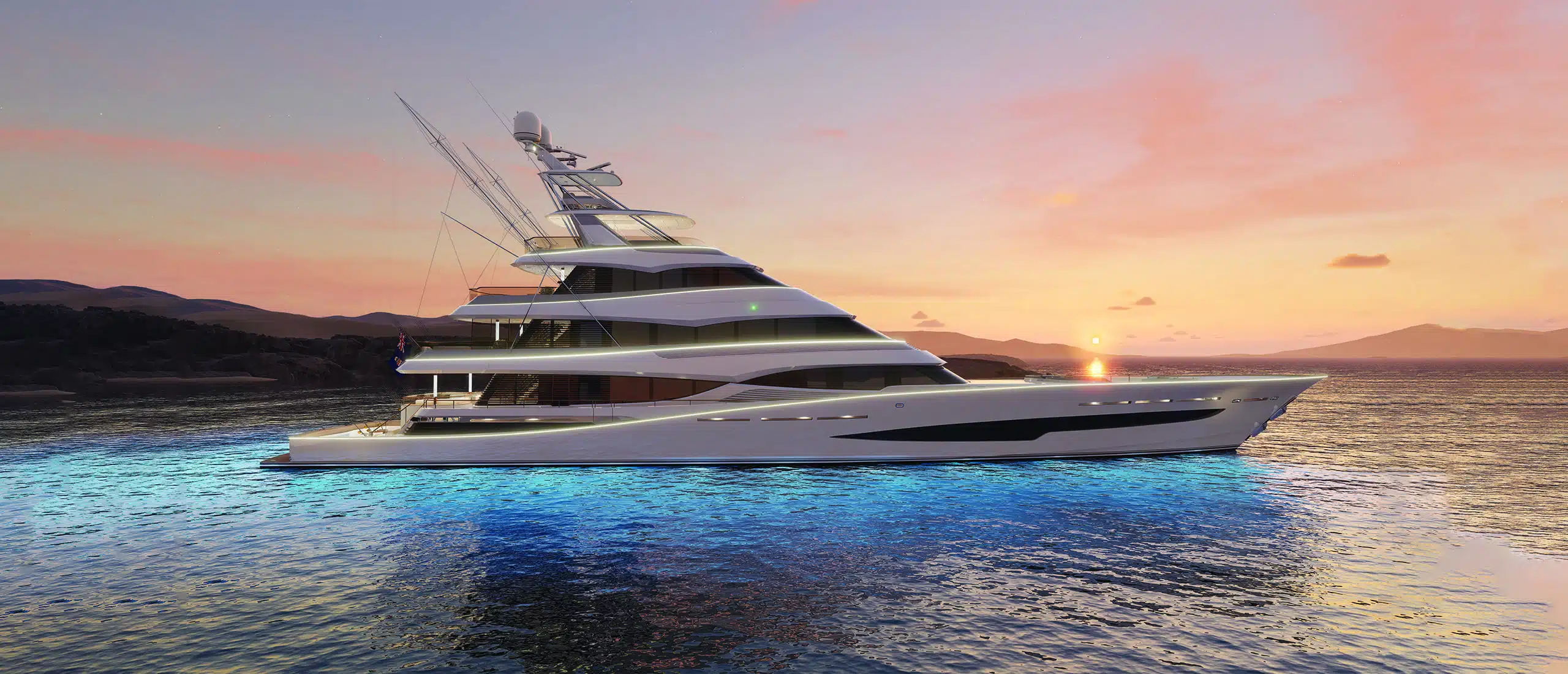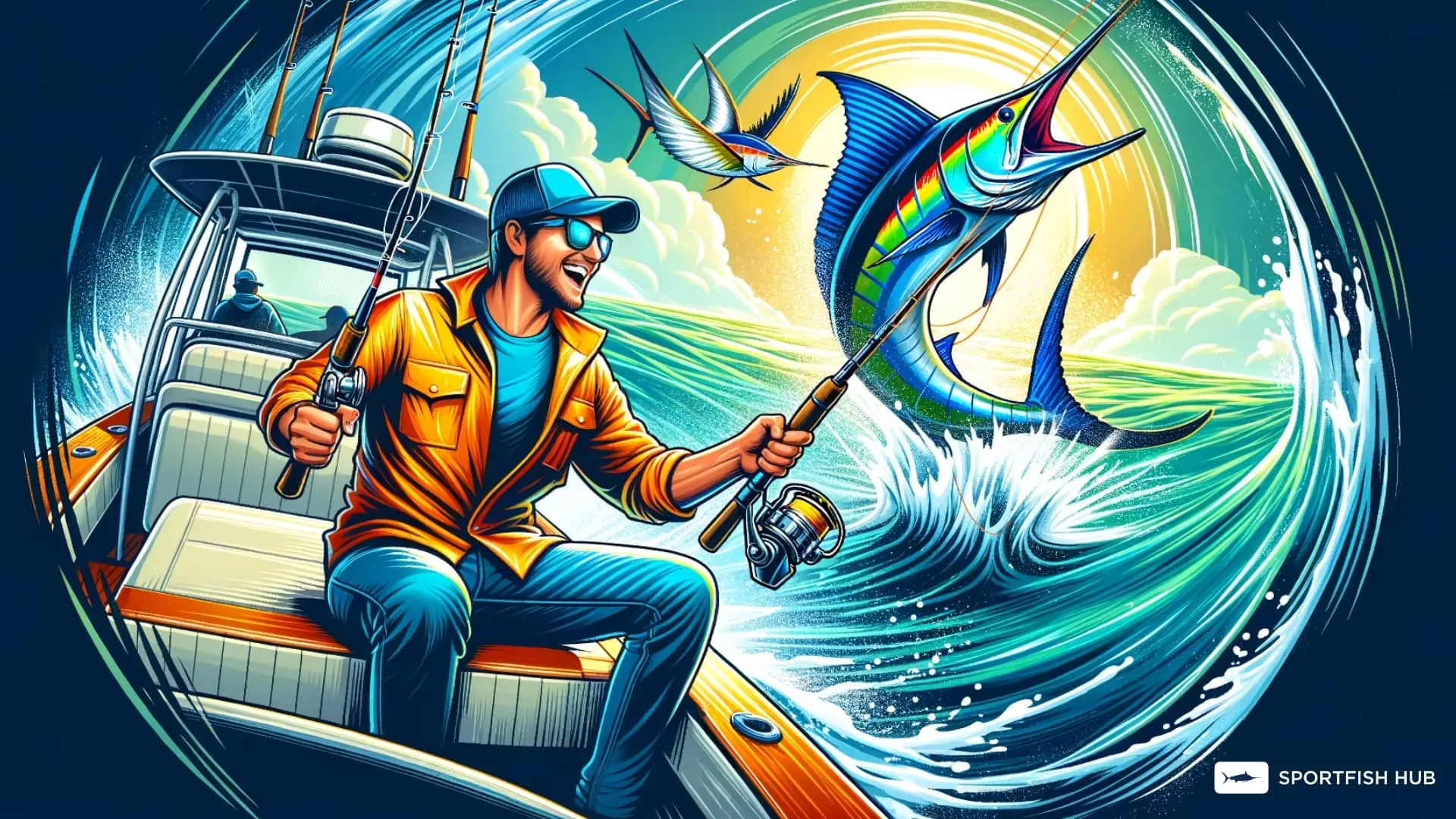White marlin are prized gamefish that provide an exciting challenge for anglers. Here is everything you need to know about finding and catching these acrobatic billfish.
Key Takeaways:
- White marlin migrate through the Atlantic, Caribbean and Gulf of Mexico following warm water temperatures. Peak seasons vary by region.
- Look for temperature breaks, color changes, and signs of baitfish to find white marlin. Fishfinder and satellite data are key tools.
- Use naked ballyhoo or small lures on 30-40 lb tackle. Circle hooks are best for catch and release.
- Add dredges and teasers to raise marlin to the surface. Pitch extra baits to turn singles into doubles.
- Fight fish lightly and boat quickly. Keep other lines in the water for multiple hookups.
What are White Marlin?
White marlin (Kajikia albida) are pelagic billfish found in tropical and subtropical waters of the Atlantic Ocean. They are smaller relatives of the blue marlin, with elongate bodies, pointed bills, and signature dorsal fins.
- Size: Typically 4-6 feet long and 60-80 pounds. The all-tackle world record is 181 pounds.
- Color: Blue-green on the back fading to silvery white below. Rounded pectoral and dorsal fins help identify them.
- Range: Migrate long distances following warm water. Found from 45°N to 45°S latitude.
- Diet: Feed on squid, mackerel, flying fish and other small baitfish. Aggressive pack hunters.
- Lifespan: Estimated up to 20 years. Sexual maturity around 2-3 years old.
White Marlin Migration Patterns
White marlin are highly migratory, moving thousands of miles annually following warm water currents and temperature breaks. Their range and peak seasons vary:
- US East Coast: Arrive off Mid-Atlantic coast in July. Peak from MD to NC in Aug-Sept. Follow eddies inshore along shelf. Leave by October.
- Gulf of Mexico: Appear April-May. Spawn June-July. Migrate to Caribbean in fall. Year-round further south.
- Caribbean Sea: Most abundant Feb-April when spawning. Some remain all year.
- Brazil: Peak season November-March. Fish leave in southern winter.
- General: Warm water above 75°F most attractive. Follow baitfish concentrations.
How to Find White Marlin
Veteran captains use a variety of tools and techniques to pinpoint white marlin:
- Satellite data – Monitor sea surface temperature, chlorophyll, and altimetry maps to identify temperature breaks, rips, and eddies.
- Communication – Get reports from other boats and dock chatter to narrow the search area.
- Sonar – Mark bait pods and fish arches. Scan water column in likely areas.
- Water signs – Watch for color changes, weed lines, debris, and activity at surface.
- Depth – Target appropriate depths based on location and season. Offshore fish typically in 500-1500 ft range initially.
- Trolling – Cover likely zones methodically while watching for marlin. Adjust speed and spread depth to tempt bites.
White Marlin Fishing Tackle, Bait, and Techniques
The light tackle stand-up approach is ideal for catching and releasing white marlin:
- Rods – 30-40 lb class rods around 5-6 feet long for good leverage
- Reels – Matching conventional reels with smooth drags tuned to 6-8 lbs of pressure
- Line – Monofilament in 20-30 lb test. Fluorocarbon leaders of 50-80 lbs.
- Hooks – Circle hooks are required for catch and release. Sizes from 6/0 to 8/0
- Baits – Dead or lively small-to-medium ballyhoo are top choices. Rig naked or with skirts/heads.
- Spread – Pull 1 bait per rigger, 2 flatlines, add dredges/teasers. Pitch extra baits to doubles.
- Technique – Feed fish on strike, fight lightly, boat quickly. Circle around and continue trolling after hookups.
Using Dredges and Teasers
Adding dredges and teasers to your spread is key for attracting white marlin to the surface and exciting them to feed aggressively.
- Dredges – Pull mullet/ballyhoo imitations 3-6 feet down to mimic bait balls. Use heavy weights and dredge rods.
- Teasers – Rig squid chains or bird-lure combos on outriggers. Place off the sides just behind dredges.
- Pitch baits – Have extra hooked baits ready to present to fish lit up on teasers. Turn singles into doubles.
- Boat position – Turn towards fish to keep baits in clean water. Shorten inside dredge, lengthen outside dredge.
- Visual cues – Watch for color changes, tailing/slashing, lit up fins when fish enters spread.
Fighting and Landing White Marlin
Use these techniques for an optimal catch-and-release experience:
- Set drag around 6-8 lbs to prevent pulling hooks and stressing fish.
- Allow marlin to take bait deep before sweeping rod low and engaging reel.
- Keep rod tip low and pressure steady. Let fish run when it jumps and thrashes.
- Use lighter drag and tackle to keep marlin on surface rather than diving deep.
- Boat fish as quickly as possible while minimizing handling. Circle hook should release easily.
- Support fish gently, do not remove from water. Revive upright in water flowing into mouth/gills.
White Marlin Fishing Hot Spots
Prime destinations to target white marlin vary seasonally. Top picks include:
US Mid Atlantic
- Hudson, Baltimore, Poor Man’s, Norfolk Canyons
- Wilmington to Washington Canyons
- 30-100 fathom edges from June-September
Gulf of Mexico
- Off Louisiana coast spring through fall
- Oil platforms, buoy lines, and underwater structures
- Flower Garden Banks from April-July
Caribbean
- Windward Passage between Cuba and Haiti
- North coast of Dominican Republic
- Puerto Rico, USVI from February-April
Brazil
- Off Vitoria, southern Bahia
- Abrolhos region November-March
The White Marlin Open
The White Marlin Open is a prestigious annual fishing tournament held in Ocean City, Maryland since 1974. Here are some key facts about this famous event:
- The 2022 tournament drew 408 boats and over 3,500 anglers competing for $8.6 million in prize money.
- The first tournament in 1974 had just 57 boats and awarded $20,000 total.
- Over its history, the tournament has awarded more than $90 million in winnings.
- The 2019 event awarded a record $4.5 million for a single fish, a 97-pound white marlin.
- The 2022 tournament awarded $4.3 million for a 77.5 pound white marlin, the second largest payout.
- The tournament record for the heaviest white marlin caught stands at 93 pounds.
- Prizes are awarded for the heaviest qualifying billfish including white marlin, blue marlin, sailfish and swordfish.
- Other categories include tuna, dolphin, wahoo and shark by weight.
- The tournament runs for 5 days annually in early August out of Harbor Island in Ocean City.
- Over 300 local boats compete, along with more than 100 out-of-town teams.
- The White Marlin Open draws thousands of spectators onshore daily during the event.
- Conservation is emphasized with mandatory circle hooks and promoting live release of billfish.
No matter where you go fishing for white marlin, finding temperature breaks holding baitfish is the key to great action. Follow the migration patterns seasonally, be prepared to cover water to locate fish, and use all your senses to raise these acrobatic gamesters. With the right techniques, light tackle, and some patience, you’ll soon be hooked on targeting one of the ocean’s ultimate predators.













